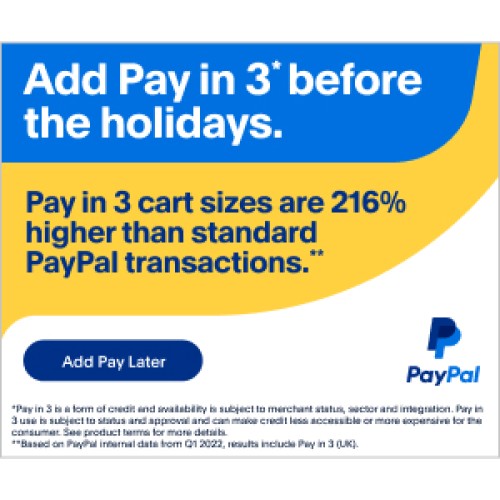The use of cryptocurrencies as a payment method, while still in its infancy, should be something that e-commerce owners should consider. According to Pew Research, 16 percent of US consumers use crypto in several transactions. This percentage may be small in number, but it shows a lot of promise as awareness of its advantages is increasing.
A survey showed that 58 percent of crypto spenders plan to use it for e-commerce purchases. Additionally, 88 percent of them specifically look for retailers that support crypto.
Why do consumers prefer this payment method?
Firstly, cryptocurrencies leverage blockchain technology. This technology enhances security, rendering transactions nearly impossible to tamper with or reverse. Secondly, cryptocurrency payments offer swifter processing times and lower costs than traditional payment methods. This difference in processing times means there are no intermediaries, such as banks. This feature makes cryptocurrencies particularly appealing for cross-border transactions, which tend to be delayed and expensive when using conventional banking procedures. As such, adding a decentralized option, like a Bitcoin payment gateway, should be up for consideration among e-commerce owners.
How To Add Crypto Payments To Your Store
Here are some best practices if you're considering adding crypto payments as an option.
1. Research and choose a suitable cryptocurrency
Research the various cryptocurrencies available when adding a crypto payment option to your e-commerce store. Familiarize yourself with widely used options like Bitcoin (BTC), Ethereum (ETH), and Litecoin (LTC) to start with.
While researching, think about the pros and cons of each cryptocurrency. Assess factors such as security, transaction speed, scalability, and popularity within your target audience. For example, Bitcoin offers robust protection and wide acceptance, while Ethereum provides smart contract capabilities.
More importantly, choose a cryptocurrency that aligns with your business goals and target audience. Consider whether your customers are more likely to own and use a particular cryptocurrency. Picking a suitable cryptocurrency ensures smoother integration and better customer acceptance.
2. Select a reliable payment processor
To enable crypto payments in your e-commerce store, you'll need to choose a reputable payment processor that supports cryptocurrency transactions. Research different crypto payment processors and evaluate their features, fees, and integration options.
Compare transaction fees charged by different processors, as these can vary significantly. Also, consider processing times, as some cryptocurrencies offer faster confirmations than others. Look for payment processors that support various cryptocurrencies to cater to diverse customer preferences.
Additionally, consider features like multi-currency support and automatic conversion. Multi-currency support allows customers to pay with different cryptocurrencies, expanding their options. Through automatic conversion, crypto payments can be effortlessly transformed into your preferred fiat currency, minimizing the necessity for manual modifications.
It's also best to consider mobile payments. Cellular service providers are increasingly adopting this integration for their subscribers.
3. Ensure wallet security
As you incorporate crypto payments, it's crucial to prioritize the security of your digital wallets. While cryptocurrencies are inherently secure, it's important to implement additional measures to protect your funds and customer transactions.
Educate yourself about the basics of cryptocurrency wallets, including the different types: hardware, software, and online wallets. Look for wallets that offer features like two-factor authentication, encryption, and offline storage for added security.
Regularly update and back up your wallet information to protect against potential loss or theft. This ensures that even if there is an issue with your primary wallet, you can recover your funds and maintain continuity in crypto payment processing. Remember, crypto fraud is prevalent, resulting in cumulative losses of $54 million.
Alternatively, e-commerce store owners can use Ethereum Name Service (ENS) domains to tighten security measures. The decentralized nature of ENS domains ensures that payment information remains secure and tamper-proof. Plus, it enables e-commerce businesses to create branded domain names that align with their company name or product. This helps establish trust and credibility among customers. They can quickly identify and verify the domain associated with the business.
It also simplifies the payment process. ENS domains provide a user-friendly alternative to lengthy and complex cryptocurrency addresses. Instead of requiring customers to enter lengthy addresses during the payment process, e-commerce platforms can integrate ENS support. This allows users to associate their ENS domain name with their cryptocurrency address, making it easier for customers to send payments.
By prioritizing wallet security, you can provide a secure environment for your customers' funds and enhance their trust in your e-commerce store.
4. Update terms and conditions
When accepting crypto payments, update your terms and conditions to include specific policies related to cryptocurrency transactions.
Clearly state your cryptocurrency payment policies, including details on how payments are processed, accepted cryptocurrencies, and any restrictions or limitations. Outline refund and return procedures specific to crypto transactions, ensuring clarity for customers when they need to initiate such processes.
Remember to include information about transaction fees associated with crypto payments and communicate any conversion rates that may apply. This transparency helps customers understand the costs and ensures no surprises during checkout.
Additionally, inform customers about any potential risks associated with cryptocurrency payments, such as price volatility and the irreversible nature of transactions. Your goal is to help customers make informed decisions and minimize potential misunderstandings or disputes.
Updating your terms and conditions with specific provisions for crypto payments establishes clear guidelines for you and your customers. This is critical to fostering a transparent and trustworthy payment process.
5. Implement a user-friendly checkout process
To provide a seamless experience for customers making crypto payments, optimize your checkout process for ease and convenience by instructing customers on how to make crypto payments.
Provide step-by-step guidance on creating a wallet, obtaining the necessary cryptocurrency, and completing the payment process. This information should be easily accessible during the checkout flow.
Consider implementing features like QR codes or wallet addresses that customers can scan or copy to simplify the payment process. QR codes, in particular, can be generated for specific payment amounts, making it easier for customers to initiate payments accurately.
Test the checkout process thoroughly to ensure it works smoothly for customers. Simulate the payment flow using different cryptocurrencies to verify that transactions are processed correctly and seamlessly.
6. Educate customers about crypto payments
Many customers may be unfamiliar with cryptocurrency and how it works. To promote adoption and understanding, create educational content that explains the basics of cryptocurrencies, wallets, and the process of making crypto payments.
Develop guides or tutorials that walk customers through setting up a wallet, acquiring cryptocurrencies, and initiating payments. Address common concerns and misconceptions about crypto payments, providing clear explanations and reassurances.
Consider offering dedicated customer support specifically for crypto-related queries. You can include a dedicated email address or live chat option to assist customers with questions or who need assistance during payment.
7. Monitor and evaluate crypto payment performance
Once you've implemented crypto payments, monitoring their performance and assessing their impact on your e-commerce store is crucial.
Track the number and value of crypto transactions to understand the adoption rate and overall revenue generated through crypto payments. Check conversion rates to assess the effectiveness of your crypto payment integration. Pay attention to customer feedback and reviews to identify any issues or challenges customers face during the payment process. Check if there are necessary system upgrades that you must do while monitoring performance.
Use these insights to optimize your crypto payment system. Address any identified issues promptly and make necessary improvements to enhance the user experience. Keep yourself in the know with the latest news and developments in cryptocurrency to adapt your payment process accordingly.
Implement Crypto Payments for Your E-commerce Store With Ease
Image by Mariia Shalabaieva on Unsplash
With these tips, you can provide your customers with additional payment options. Ultimately, it will contribute to a positive user experience that will increase the customer's lifetime value (CLV).
Through thorough research, secure wallet management, and user-friendly processes, you can provide a seamless payment experience for your customers. Continuously monitor and optimize your crypto payment system, keeping up with the latest advancements in the cryptocurrency landscape.
Embrace the potential of cryptocurrency payments, and position your e-commerce store as a go-to for crypto spenders.



Login and write down your comment.
Login my OpenCart Account